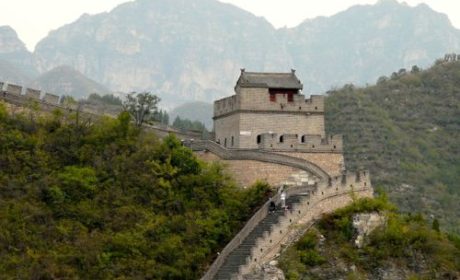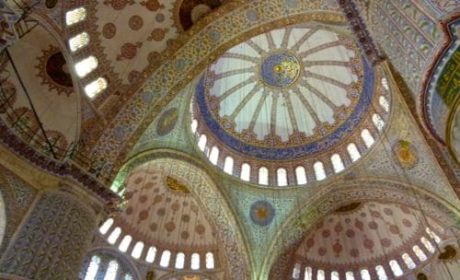If you only have one day in Nagasaki, Japan, how do you choose what to see and do? Considering Nagasaki’s place in WWII history, the decision isn’t hard for those trying to understand how one event—the dropping of an atomic bomb—so changed the world.
One day is never enough to explore a city, but on cruises, Alan and I often have only a short time to experience a destination. Such was the case on our one day itinerary in Nagasaki. We chose to explore on a shore excursion offered by our ship, Regent Mariner.
Table of Contents
How to spend one day in Nagasaki
On a Nagasaki shore excursion, a visit to the Peace Park and the Nagasaki Atomic Bomb Museum serves as a refresher in WWII history. It’s a moving experience for any boomer traveler cruising to Nagasaki, Japan.
Follow it up with a stop at Glover Garden to decompress from the war drama and for a birds-eye view of Nagasaki today.

A Lesson in History on a Nagasaki Shore Excursion
Nagasaki, Japan. What do those words mean to you? Destruction? Nuclear devastation? Wasteland?
During my boomer childhood, schoolbooks taught about the powers of the atom bombs dropped on Nagasaki and Hiroshima to end World War II.
In the Cold War aftermath, I remember elementary school emergency drills where I crouched against the cold, concrete walls in the hallway, one arm across my eyes, the other protecting my head as if that was any safeguard against a nuclear blast that would destroy everything for eons. Or so I was taught.
I’ll admit, I hadn’t given Nagasaki much thought through the years, or kept up with the community’s recovery. When I read that Nagasaki would be a port on our Vancouver to Singapore itinerary with Regent Seven Seas Mariner, I wasn’t sure that I wanted to get off the ship.
Right or wrong, my country dropped an atomic bomb on the city. I still equated it to a wasteland. Why would I want to visit? And why would the citizens welcome Americans?
On the morning that Mariner sailed into the Nagasaki harbor, a green, mountainous landscape appeared outside my window. Stepping out onto the balcony, I looked for signs of devastation—a denuded forest—land that had not come back to life—I didn’t see any.
Soon, Alan and I were riding on a bus through a bustling harbor area on a Nagasaki cruise excursion to the Peace Park, followed by a visit to the Atomic Museum.
Boomer Travel Tip
MedjetAssist Members who are hospitalized 150 miles from home receive medical transport to a home-country hospital of choice. Memberships from $99.
Begin at the Nagasaki Peace Park

In the park, the giant Nagasaki Peace Statue points to a bomb falling from the sky with one arm, while pointing to the earth with the other, symbolizing eternal peace. Designed by Seibou Kitamura, the statue stands 9.7 meters (almost 32 feet) high.
At the statue’s base, a vault holds the names of those who lost their lives in the bomb blast or those who later died as a result of the blast. A memorial service is held at the foot of the statue each August 9 to remember the 40,000 citizens who lost their lives to the Nagasaki bombing.

A tower standing next to the statue holds origami crane flags. These symbols of peace represent the story of Hiroshima bombing survivor, Sadako Saski. She attempted to fold 1,000 paper cranes as a wish for hope before her death from leukemia caused by nuclear fallout. A fictionalized account, Sadako and the 1000 Cranes, tells the melancholy story.
At the Nagasaki Peace Park, sidewalks are lined with statues inscribed with words of solace and wishes for peace, gifts from countries throughout the world. The serene setting sends at a dove-shaped fountain, The Fountain of Peace. It’s dedicated to the bombing victims who called out for water and represents the hope of a lasting world peace.
Continue the history lesson at the Atomic Bomb Museum
At the Atomic Bomb Museum, the most sombre of places to visit in Nagasaki, winding ramps led downstairs into the actual display. It felt as if I was descending into the very bowels of the earth or was it really hell?
In a darkened room, sirens wailed and residents reached out from smoking rubble. All that was missing was the stench of death in this realistic portrayal of a nuclear bombing.
Other galleries contained photos and personal items recovered from the debris. Japanese, Americans and other nationalities, stood shoulder to shoulder observing the lessons of history.
Pause to reflect at Ground Zero

When this portion of the Nagasaki tour ended, our guide offered to lead those of us who were interested across the street to the obelisk that marked ground zero of the atomic bombing.
Tourists took turns standing in front of the granite column smiling for the camera but I couldn’t do it. How could I smile in front of a place that marked such devastation?
Admire the peaceful view at Glover Garden

The shore excursion continued to Glover Garden, an open-air museum on a hill overlooking Nagasaki. Showcasing gardens and western-style historic homes of European merchants in the 19th century, the museum offers a look at life in Nagasaki predating WWII.
I’m glad I got off the ship for the Nagasaki Peace Park excursion to discover a city that is alive and well with citizens who are polite and welcoming. It wasn’t an easy journey into history but one I’m happy that I took with an open mind.
There are many things to do in Nagasaki. If a shore excursion isn’t for you, check out the guided tours at Viator.
Thinking about traveling to Japan?
- Debi Lander, MITF featured writer, describes her first impressions of Japan.
- Enjoy the Japanese countryside while biking the Kibiji Trail.
- Read Nicole Jewell’s tips for visiting Nara.
- Brette Sember offers tips on how to be your own tour guide when you visit Japan.
Save to Pinterest




